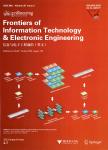版权所有:内蒙古大学图书馆 技术提供:维普资讯• 智图
内蒙古自治区呼和浩特市赛罕区大学西街235号 邮编: 010021

作者机构:Center for Nonlinear Dynamics Defence University Institute of Energy Mekelle University Biomedical Engineering Department Amirkabir University of Technology NAAM Research Group Faculty of Science King Abdulaziz University Department of Mathematics Quaid-i-Azam University Modelling Evolutionary Algorithms Simulation and Artificial Intelligence Faculty of Electrical and Electronics Engineering Ton Duc Thang University
出 版 物:《Frontiers of Information Technology & Electronic Engineering》 (信息与电子工程前沿(英文版))
年 卷 期:2019年第20卷第4期
页 面:584-590页
核心收录:
学科分类:0831[工学-生物医学工程(可授工学、理学、医学学位)] 0809[工学-电子科学与技术(可授工学、理学学位)] 08[工学] 0836[工学-生物工程]
主 题:Fitzhugh-Nagumo Chaos Fractional order Magnetic flux
摘 要:We propose a modified Fitzhugh-Nagumo neuron(MFNN) model. Based on this model, an integerorder MFNN system(case A) and a fractional-order MFNN system(case B) were investigated. In the presence of electromagnetic induction and radiation, memductance and induction can show a variety of distributions. Fractionalorder magnetic flux can then be considered. Indeed, a fractional-order setting can be acceptable for non-uniform diffusion. In the case of an MFNN system with integer-order discontinuous magnetic flux, the system has chaotic and non-chaotic attractors. Dynamical analysis of the system shows the birth and death of period doubling, which is a sign of antimonotonicity. Such a behavior has not been studied previously in the dynamics of neurons. In an MFNN system with fractional-order discontinuous magnetic flux, different attractors such as chaotic and periodic attractors can be observed. However, there is no sign of antimonotonicity.